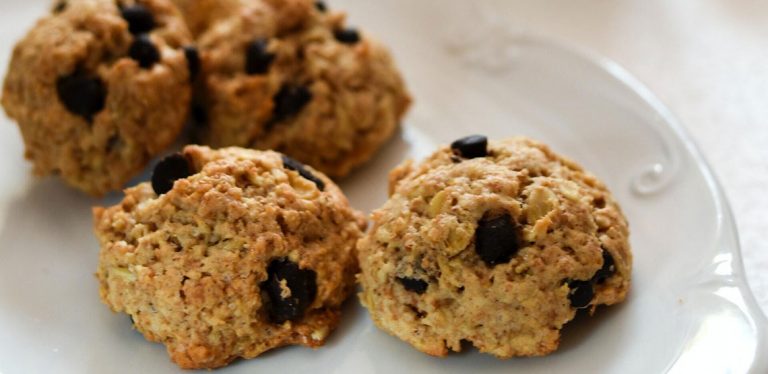Best Foods to Lower Blood Sugar
Keeping your blood sugar balanced is a great way to prevent prediabetes, insulin resistance, or the development of type 2 diabetes and other chronic health conditions. While it may seem overwhelming, there are lots of small actions you can take to keep your blood sugar balanced, including being purposeful about what you eat, which is why we are going to take a look at the best foods to lower blood sugar.
In this article we will learn about the top three types of foods to balance your blood sugar (protein, fat and fiber), how to create a balanced plate and some general lifestyle suggestions that can help keep your blood sugar stable.
What is Blood Sugar?
Before we learn how to balance our blood sugar, we should look at how our body actually metabolizes carbohydrates. Carbohydrates are one of three macronutrients in the diet and are made up of glucose (sugar), starches and/or celluloses (fiber).
Let's start at the beginning. When it comes to metabolizing the carbohydrates in your diet, the process actually starts in the mouth. As you start to chew your food, salivary amylase (a digestive enzyme) is released and starts to break down the bonds between glucose molecules — this step is one of the reasons why it is so important to chew your food! Acidic chyme (your chewed and mashed up food) is released from your stomach and initiates the release of pancreatic enzymes and the secretion of insulin from beta cells in the pancreas. This process happens much faster if you eat food that is pure sugar or carbohydrate.
On average, a healthy amount of sugar in the bloodstream is 1 teaspoon or 4 grams total. Any more than this amount becomes toxic to our cells and promotes the creation of advanced glycation end-products (AGEs), which is when a glucose molecule attaches itself to proteins in the body.
What you want to do to keep your blood sugar levels stable is twofold. First, you want to limit the amount of refined or overly processed sugars and flour products you consume since they can release a lot of glucose into the blood stream, spiking your sugar levels.
Second, you want to combine your carbohydrate foods with other foods and nutrients that can stabilize your sugars. Let's take a look below!
1. Healthy Protein Sources
When it comes to keeping your blood sugar stable, something to remember is that you want to combine your carbohydrates with nutrients, such as protein, fat and fiber. Eating your foods in combinations such as these will prevent your stomach from releasing pure sugar into your bloodstream, therefore keeping your blood sugar levels more stable.
First, you want to think about adding protein sources to your meals or snacks, since protein can help keep you feeling fuller for longer, slow the release of food from the stomach and is important for building healthy cells and muscle tissue throughout the body.
Protein can come from plant or animal sources, which you can enjoy depending on your dietary preferences or requirements. Some great sources of protein include:
- Nuts and seeds of all varieties. We'll see these again later since they also contain healthy fats and fiber.
- Eggs.
- Dairy, such as cheeses, yogurts and whey protein.
- Legumes, such as all beans, lentils, soy and chickpeas. These protein sources also contain lots of healthy fiber and complex carbohydrates.
- Poultry, such as chicken, turkey, duck, pheasant and quail.
- Ruminants, such as bison, beef, sheep, goats, lamb and pork.
2. Healthy Fat Sources
Incorporating healthy fats into your meals and snacks is another great way to lower your blood sugar levels. Fats have no impact on blood sugar levels and, like protein, they can help keep you feeling full for longer so you are not constantly reaching for sweet treats and snacks.
Healthy fats are also great sources of energy and we need them to build a healthy brain, cells throughout the body and they can be useful for balancing inflammation in the body.
Some great sources of healthy fats include:
- Omega-3 fats from salmon, sardines, mackerel (and other cold-water fish), hemp hearts, chia seeds, flax seeds, algae, almonds, walnuts and pecans.
- Medium-chain fats from coconut products. These fats are great energy sources for the liver and brain, easy to digest and delicious satiating.
- Monounsaturated fats from olives and oil, avocados and avocado oil, cashews, macadamia nuts, almonds and pecans.
- Short-chain fats from grass-fed or organic butter. These fats are delicious and healing for the digestive tract.
Try incorporating a small serving (about 1 ounce of nuts and seeds or one thumb-sized serving of oil) into your meals to help lower blood sugar.
Related Search Topics (Ads)
3. Healthy Fiber Sources
Since carbohydrate-rich foods make the biggest impact on our blood sugar levels, ensuring you eat foods that come packaged with healthy fiber and complex carbohydrates can help lower your blood sugar. Luckily, most unrefined carbohydrate foods are going to be a great combination of both of these nutrients.
Some of the best sources include:
- Fruits and vegetables. Most of these foods are going to come packed with fiber and micronutrients to help keep blood sugar stable.
- Legumes, such as beans, lentils, soy and chickpeas. They combine protein, fiber and complex carbohydrates in a great package, making them perfect for lowering blood sugar levels.
- Psyllium husk can be great for folks who have a hard time getting enough fiber in their diet.
- Nuts and seeds, especially chia and flax.
- Whole grains, such as quinoa, brown rice, whole wheat, bran, oats, millet, teff. Try to eat ones that have not had their fiber removed, so they can help keep your blood sugar stable.
Honorable Mention: Cinnamon
One food that deserves its own mention on this list is cinnamon! This slightly sweet herb that comes from a tree bark has been shown in studies to lower fasting glucose levels (the amount of sugar in your blood between meals) in folks with prediabetes or type 2 Diabetes.
It is packed with fiber and helps the body clear sugar molecules from the blood stream for use in the body, which makes it a great addition to the diet if you are hoping to lower your blood sugar levels.
I love adding cinnamon to sweet treats like baked goods or adding them to sweet potatoes to help keep my blood sugar from rising too much after eating. Try incorporating about 1 teaspoon of cinnamon into your diet every day for best results.
Helpful Tips to Lower Blood Sugar Levels
Aside from food, there are a few other ways to lower your blood sugar levels:
- Exercise. Regular exercise burns sugar for energy and makes your cells more sensitive to insulin (which helps shuttle glucose into them for energy) afterwards.
- Choose unsweetened drinks and beverages. Sweetened beverages like soda, energy drinks, vitamin waters, sports drinks, fancy coffees and lattes can be loaded with sugar, without any of the fiber to help blunt the blood sugar effect. Limiting your sweetened drinks is a great way to keep your blood sugar low.
- Limit your alcohol intake. Alcohol can cause damage to your liver, which is needed to produce the insulin to keep your blood sugars stable. It also typically gets converted to sugars, so it adds empty calories and sugar to your blood stream.
- Make quality sleep a priority. Chronic insomnia and poor sleep can impact your hormone levels and decrease your insulin sensitivity.

